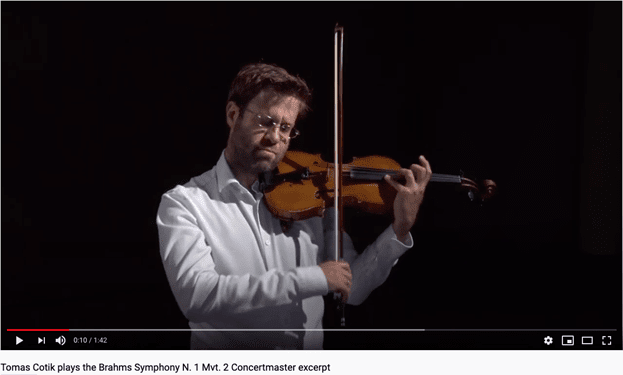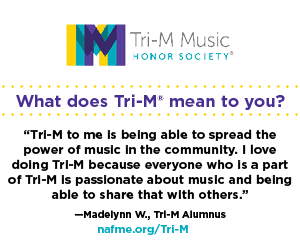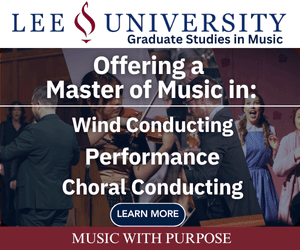NAfME BLOG
Resources for Learning the Violin Audition Excerpt: Brahms Symphony No. 1, Mvt. 2, Solo

/ News Posts / Resources for Learning the Violin Audition Excerpt: Brahms Symphony No. 1, Mvt. 2, Solo
Resources for Learning the Violin Audition Excerpt:
Brahms Symphony No. 1, Mvt. 2, Solo
By NAfME Member Tomás Cotik
Copyright © by Tomás Cotik – All rights reserved.
The April 2021 issue of Teaching Music included an article by Tomás Cotik on guidelines for recorded auditions. This is article two of six supplementing that article.
Below, you will find a brief introduction about the piece followed by a couple of recommendations of orchestral recordings and a list of concise advice that focuses on solving the usual problems that I have seen students confront in terms of rhythm, bow strokes, articulation, dynamics, vibrato, intonation, and phrasing when working on this excerpt. Please take any advice only as a guide; any recommendation or list of typical tendencies does not apply to every student. Slow, mindful practice, continued work on the basics (Intonation, Rhythm, and Sound), recording yourself regularly, and feedback from a teacher is at least as important! At the end of the document, you will find a score with the fingerings and bowings I used in the video as well as the orchestral score of the excerpt.
Watch my own video recording of this excerpt on YouTube.
Background
To say that Brahms labored over his first symphony is a great understatement. The sketches of this work, which date from 1854, show Brahms’s fourteen-year struggle to complete this composition to his own personal satisfaction as well as to that of Beethoven (whose shadow “loomed over Brahms throughout his life”).1 Brahms’s toil was not for nothing however, as this first symphony is widely regarded as “one of the greatest symphonies in the Austro-German tradition.” The second movement, in E major, features solo lines by the oboe and concertmaster, some of which are reminiscent of passages that can be found in Beethoven’s later works.2
Listen:
Follow along with the full score3 as you listen to various recordings. A few examples:
- Listen to the excerpt in context in this recording of Böhm with the Berliner Philharmoniker.
- Here you can hear another version by Eschenbach with the Concertgebouw Orchestra.
Rhythm:
- Be sure to subdivide the dotted quarter note; it is not a triplet rhythm.
- At the beginning, feel the typical Brahmsian two against three.
- Enjoy the complexity of the character and texture in Brahms.
Intonation:
- The solo violin plays with the horn; adapt your intonation and don’t exaggerate the leading tones.
- Check the 4th and 5th intervals across the melody. Like so many times in Brahms, throughout the melody there will be fourths and fifths that you want to double check for intonation (B E F# – A E).
Vibrato:
- Use a generous vibrato; consider using a lot of flesh/a flat finger for a warm Brahmsian sound quality.
- The vibrato should not be too wide, especially up on the E string.
- Practice with vibrato on every note. If you decide not to vibrato some notes, you should intuitively and immediately adjust your tone to maintain the proper sound quality.
Phrasing:
- At the beginning, observe how the long phrase is composed of a similar motif repeated twice and developed further the third time.
- Think of an overarching musical line, sort of an imaginary “big slur.” Think horizontally instead of vertically, and don’t accent the downbeats. Think in gestures, not in individual notes.
- Observe the sense of expansion and stretch.
- Enjoy the value of the notes; like having a magnifying glass at the beginning and end of each note to help connect one note to the next. Another image is to think of spreading Nutella to the very corners of a piece of bread.
- Maintain the full value of notes at the end of a phrase.
- Use a generous amount of bow. In performance with orchestra, you might end up taking more bows to project well (while of course keeping the musical slur/phrase).
- When you are the accompaniment to the horn, there is a crescendo; make sure you project on the G and D strings and that the first note of each passage really speaks.
Brahms Symphony No. 1, Mvt. 2 Score
Brahms Symphony No. 1 in C Minor, Violin I
Notes:
1 Schwarm, Betsy. 2014. “Symphony No. 1 in C Minor, Op. 68.” Encyclopædia Britannica. Encyclopædia Britannica, inc. July 14. https://www.britannica.com/topic/Symphony-No-1-in-C-Minor-Op-68.
2 “Symphony No. 1 (Brahms).” 2020. Wikipedia. Wikimedia Foundation. April 16. https://en.wikipedia.org/wiki/Symphony_No._1_(Brahms).
3 The attached scores are published by Breitkopf & Härtel. Complete scores can be found on IMSLP.
About the author:
Hailed by Michael Tilson Thomas as “an excellent violinist,” Dr. Tomás Cotik was a first-prize winner at the National Broadcast Music Competition in his native Argentina in 1997, and the winner of the Government of Canada Award for 2003-2005. An avid recording artist, Dr. Cotik has recorded fifteen CDs for Naxos and Centaur Records, which have received enthusiastic reviews from publications such as Gramophone, Fanfare, American Record Guide, Downbeat, and MusicWeb International. Dr. Cotik was a rotating concertmaster with the New World Symphony and has performed hundreds of recitals and chamber music concerts across the globe. Committed to passing on his passion for music, Dr. Cotik was appointed Assistant Professor of Violin at Portland State University in 2016. He previously taught at West Texas A&M University, Florida International University, and at the University of Miami’s Frost School of Music. His articles about pedagogy have been published in renowned international publications such as The Strad, the American String Teacher Journal, and the American Music Teacher Journal.
E-mail: tcotik@pdx.edu
Website: www.tomascotik.com
Did this blog spur new ideas for your music program? Share them on Amplify! Interested in reprinting this article? Please review the reprint guidelines.
The National Association for Music Education (NAfME) provides a number of forums for the sharing of information and opinion, including blogs and postings on our website, articles and columns in our magazines and journals, and postings to our Amplify member portal. Unless specifically noted, the views expressed in these media do not necessarily represent the policy or views of the Association, its officers, or its employees.
February 25, 2021. © National Association for Music Education (NAfME.org)
Published Date
February 25, 2021
Category
- Ensembles
Copyright
February 25, 2021. © National Association for Music Education (NAfME.org)




